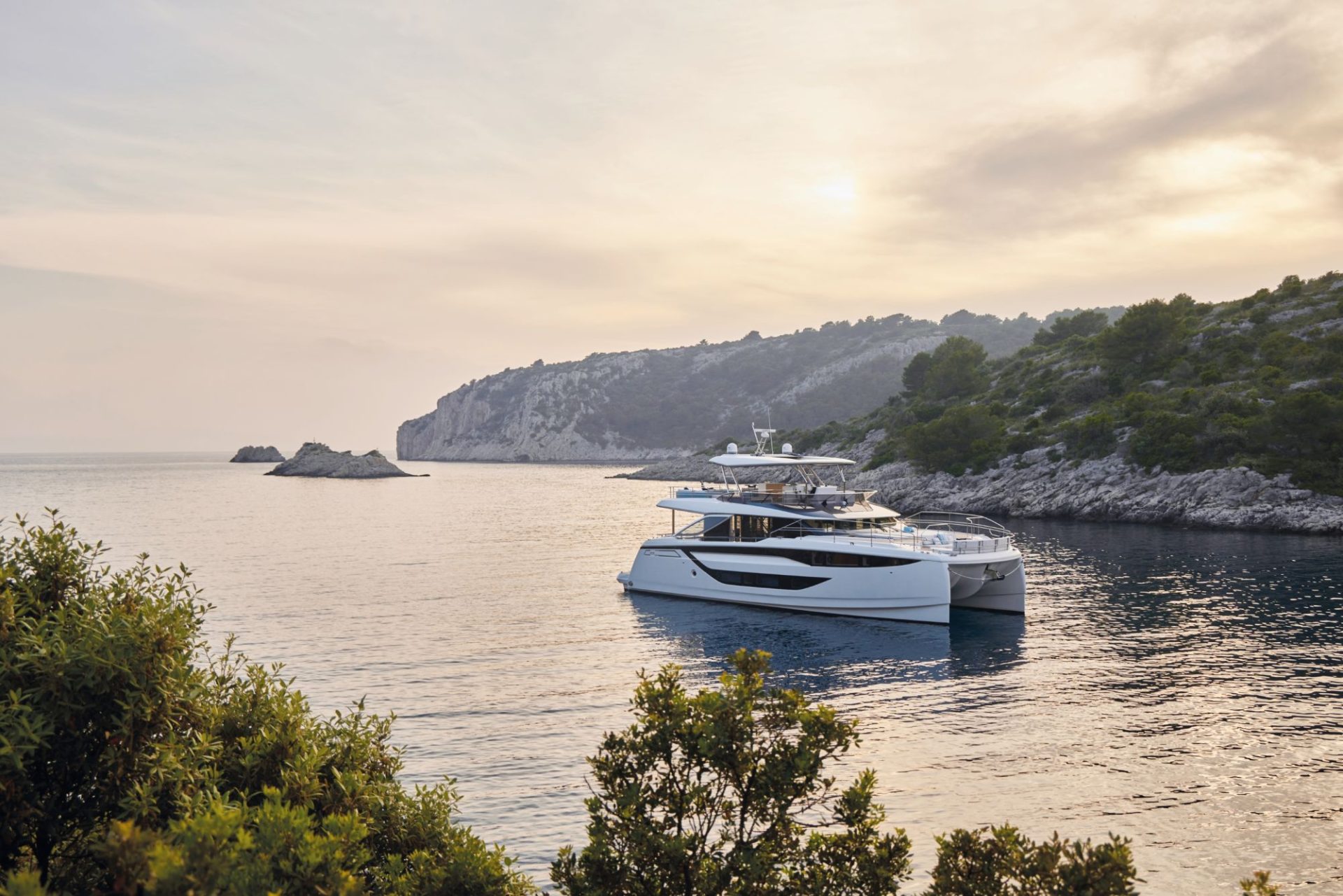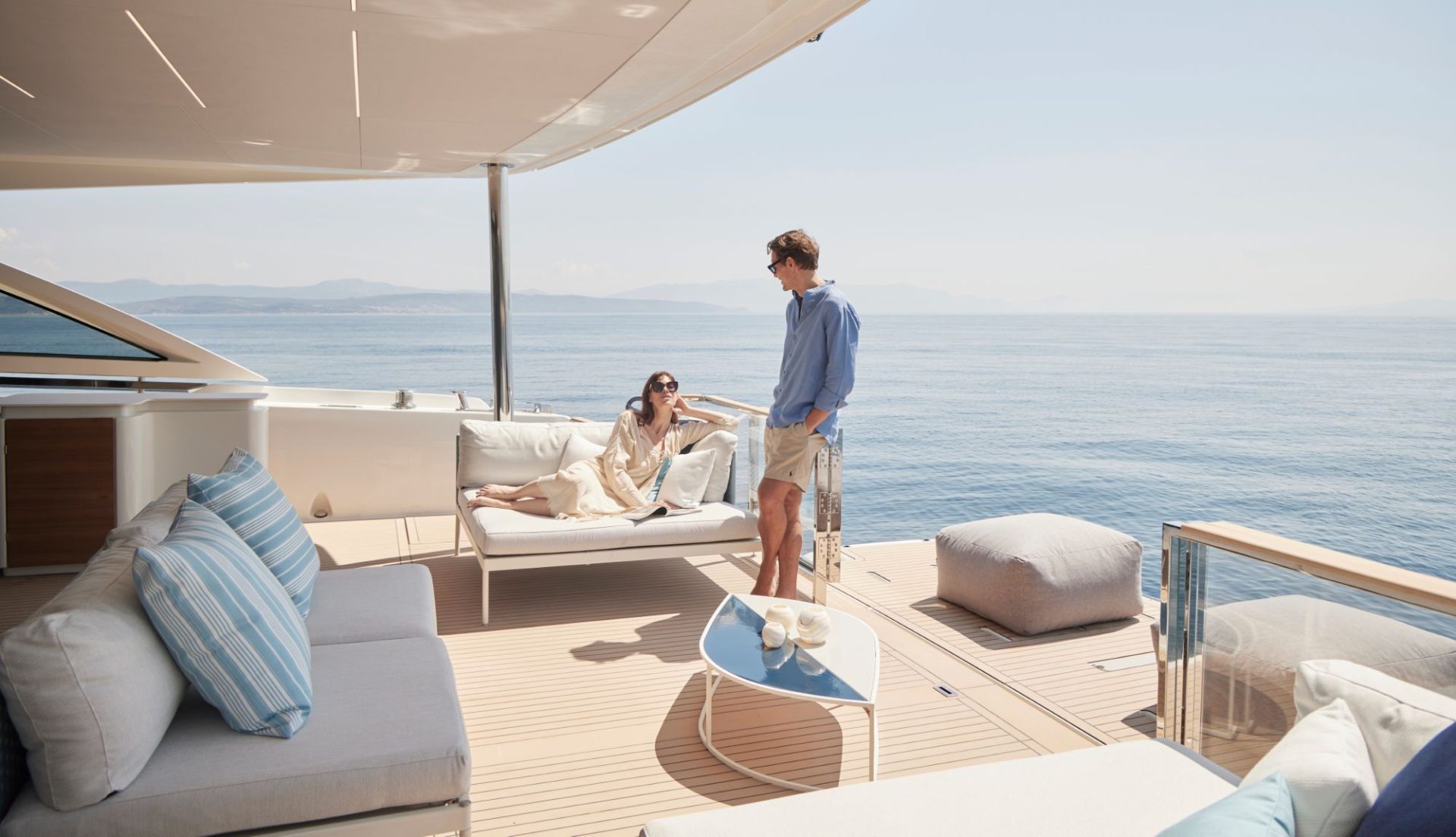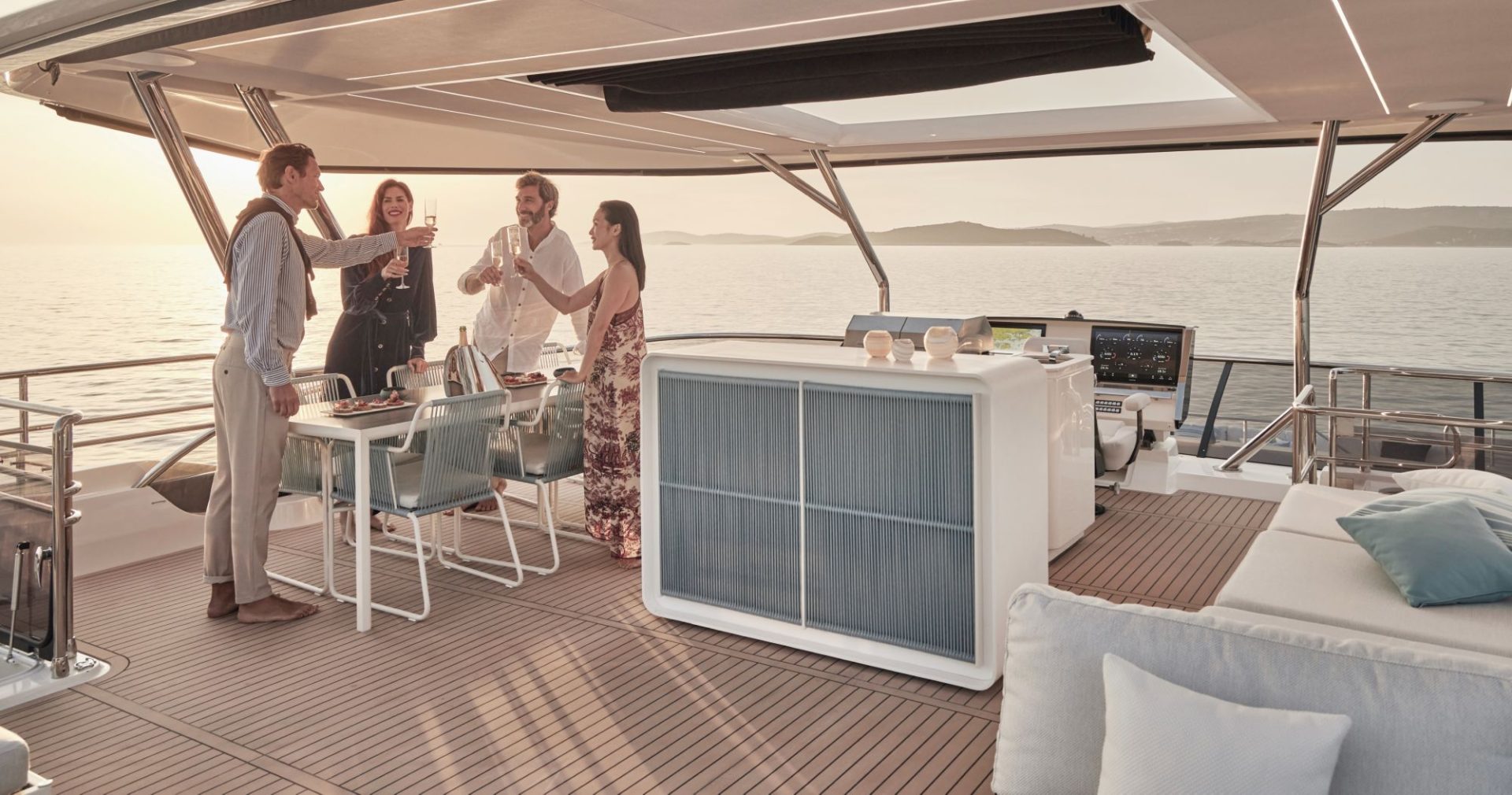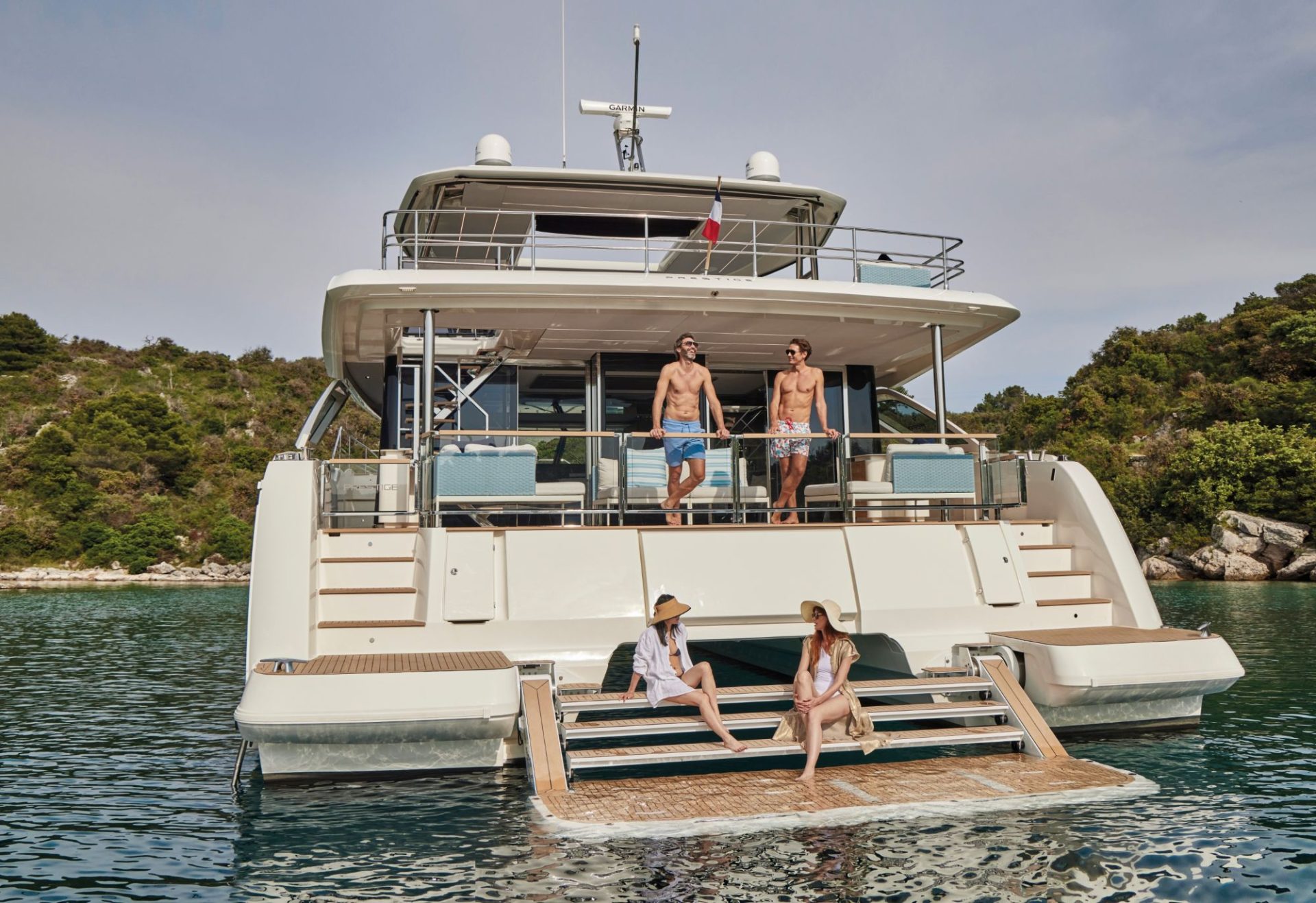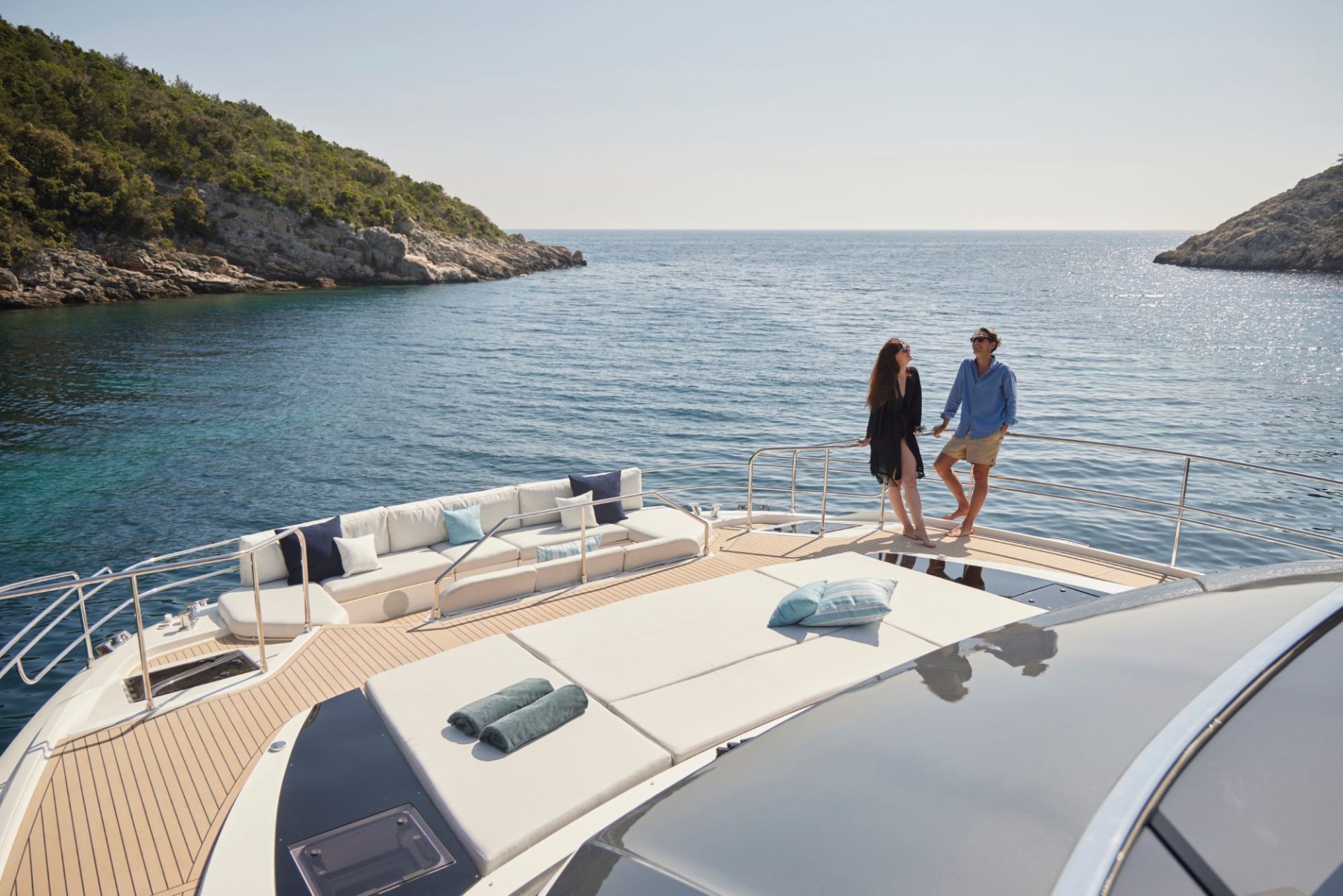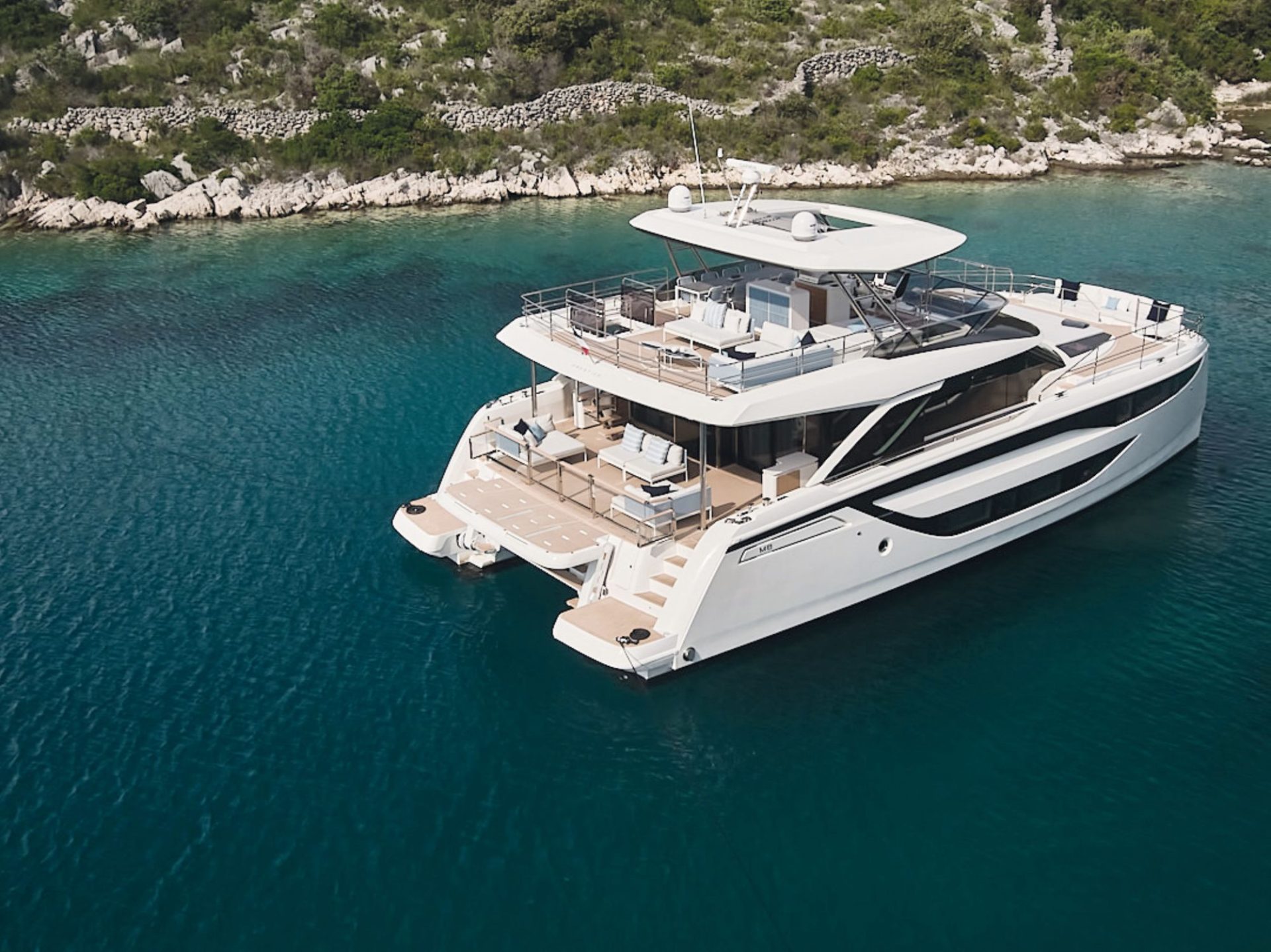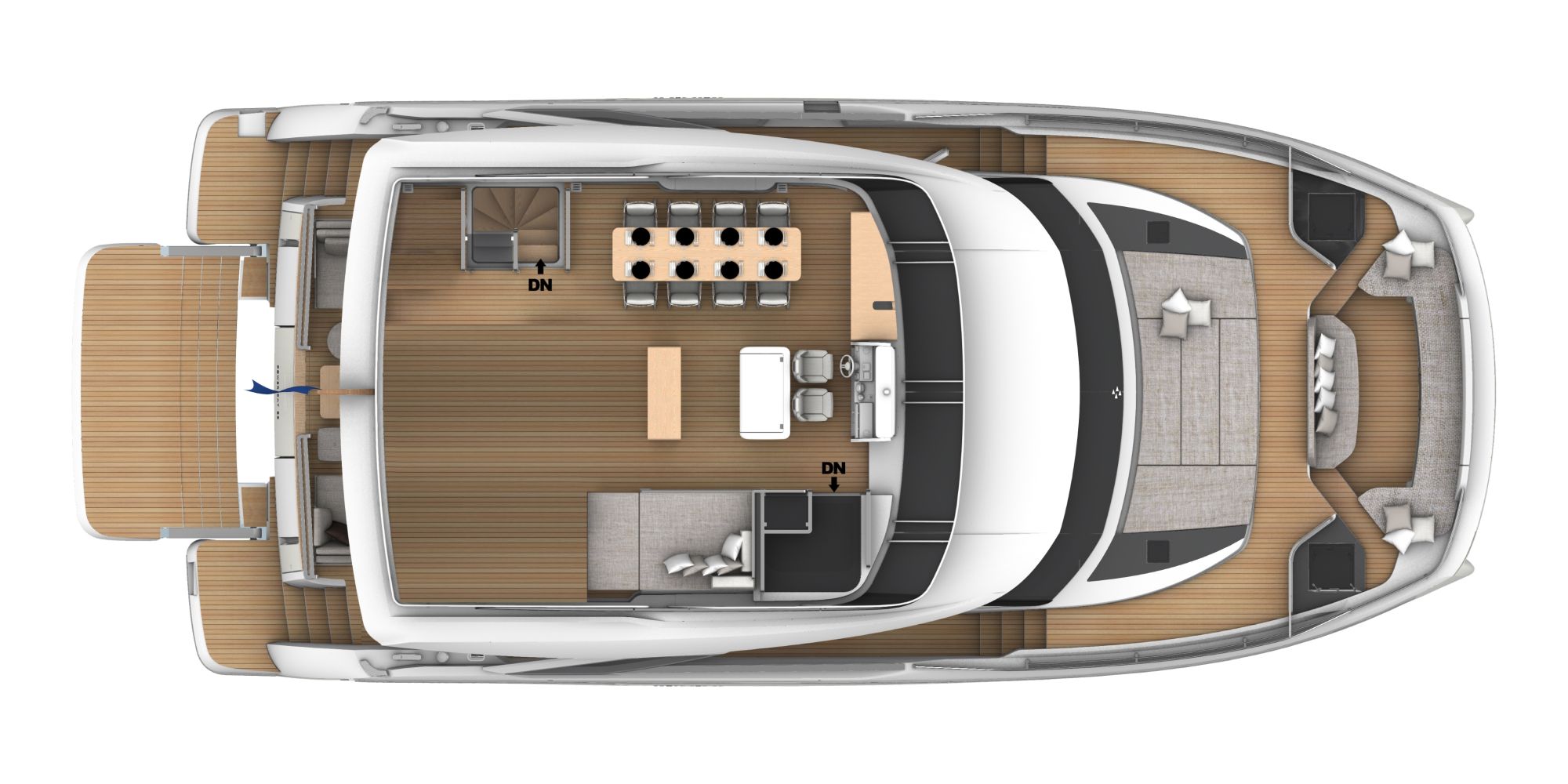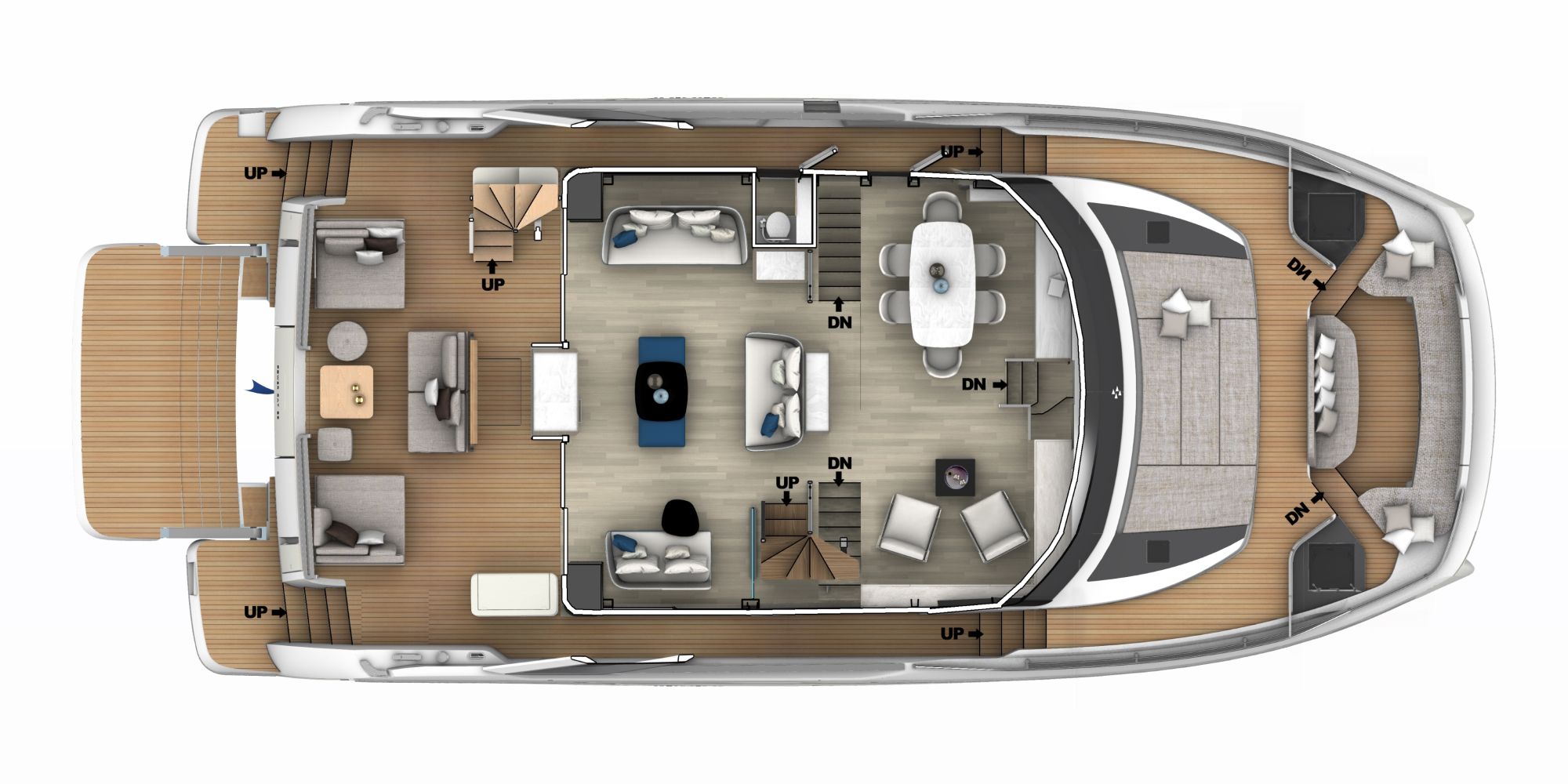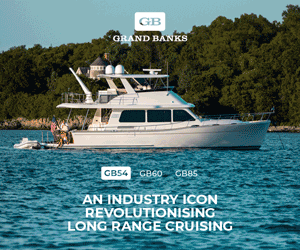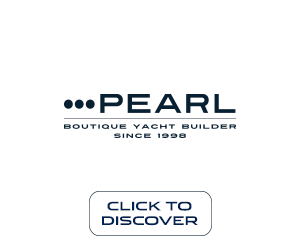Pump up the volume
Power catamarans are emerging as a solid new trend for leisure boaters but that doesn’t mean innovation in their design has been exhausted. Indeed, as we discover on a sea trial in Italy, the new M8 from Prestige shows just how far the envelope can be pushed.
Written by Dominic Wiseman
21 December 2023
A timeless (and anonymous) truth exists – every great innovation was once considered an impossible idea. This profound saying spoke volumes as I discovered the brand-new Prestige M8.
A natural evolution from the trailblazing M48, the Prestige M8 further redefines onboard space and performance, emerging as a beacon of distinction among other powered catamarans.
Few locations rival the Mediterranean for experiencing the thrill of piloting a luxury cat. As I navigate the steep, meandering coastal roads down to picturesque Portopiccolo, the smile on my face looks like I’ve just come up big at the Sunday night meat raffle.
I steal fleeting glances of the beauty I’m here to meet as she dances between the terracotta rooftops and trees that zip by. Even from halfway down, I can make out the height and width of the hull – the Prestige M8 has a commanding presence.
Unlike many production catamarans, this is not merely a sailing cat that has been turned into a power cat. The M8 has been designed specifically for power and, as a result, has a higher roofline and therefore more open space than many competitors.
In addition, no mast means no requirement to keep the centre of gravity low – the result is voluminous space.
Its name doesn’t actually represent the length of the boat. The M8 is 19.82 metres and has a beam of 8.85 metres. On paper, it’s hard to gauge the sheer floor space that gives you, but once you step on board it’s akin to stepping onto a floating apartment.
The M8 name is based on Prestige’s estimation that the space on board is equivalent to an 80 to 90-foot monohull. While it might appear slightly deceptive at first glance, it’s a claim that’s not too far from the truth.
The boat is built at Beneteau Group Italia in a town called Monfalcone on the Gulf of Trieste. We had a quick visit to the factory and saw, felt and experienced the dedication to the boatbuilding process – the factory previously produced Monte Carlo yachts, and you can see the upside of the skillsets in the finish of the M8.
Space on the M8 is evident. The design comes from Valentina Militerno de Romedis, with timber tones blended brilliantly throughout. The feel from beginning to end is that of a beachy summerhouse and, as a result, perfectly encapsulates the feeling you should have on board a boat of this design – it’s meant for relaxed cruising, not rushing about.
They haven’t overplayed the interior elements, either. The selection of freestanding furniture is perfect, and they’ve resisted filling every available space for the sake of it. Internally, to break up the vastness of space, stainless-steel structures provide a break for the stairs leading up to the flybridge to starboard and are mirrored on the port side.
There are ample walkways and an open feeling across the entire boat. The saloon uses much of the impressive 8.85-metre beam – it’s vast, connecting brilliantly with the cockpit, and has an oceanside terrace feel.
Access to the cockpit is by generous sliding doors located to port and starboard. On the test boat, the dining area was located to port, with the galley to starboard. The galley is functional, if not somewhat small given the available space.
The rear of the galley is given to a large lounge area that leads to the rear cockpit, where I imagine the lucky ones will spend most of their time. The aft deck is enormous. Modular furniture is located centre and on either side of the deck space against the rear saloon windows.
Large steps lead down to the water with a hydraulic platform offering a pool-like entry with stairs leading down to a semi-submerged swim platform. When stowed, the platform comes right up to meet the cockpit, creating a terrace-like feel. The design is by Opacmare and comes as standard – it has a capacity of 500 kilograms, so can accommodate a tender. I prefer the open and unimpeded look of the platform without the apparatus to secure a tender.
Upstairs, the flybridge is equally spacious and well-appointed with more modular furniture that has been carefully chosen to create and maintain an open feel. The main helm station is located here, front and centre. Mirroring the saloon, the dining table can be found to port with a lounging area situated aft. Behind the helm station is a small bar.
The entire area can be enclosed with clears to create an all-weather area. At the bow is a sunken lounge, presenting the ideal setting for a drink as the sun goes down. There’s enough space for 10 to 12 people with a lounge and small sunpad arrangement.
The master cabin is impressive. Stretching across both hulls, it offers a king bed, study and/or lounge area, plus a spacious bathroom with separate head and shower, as you’d expect.
The finish is luxurious, and the design fits seamlessly with the saloon, even incorporating a similar stainless-steel partition between the bed and the lounge/ study. Prestige also offers a solid partition if owners prefer a more private area off the bedroom.
The floor is level across the entire space while maintaining over 180 centimetres of headroom, and this makes movement within the area seamless. The bed is located amidships, so sadly the view out of the port windows is somewhat compromised.
The test boat was built with an additional four ensuite guest cabins of roughly equal size, with two each side located in the hulls, and this would make for a popular charter layout. The bed layouts vary between twins, a double or bunks, which for small children would be the best layout. The light into the cabins is amplified by a hull window, which also offers an excellent view when at rest.
Further at the bow, two crew cabins are located down a hatch at the head of each hull. Each has its own ensuite; small but effective. Getting down into these compartments is tricky, but once inside, they’re comfortable enough.
Beneath all the luxury lies two Volvo Penta D8 600 hp motors connected to a V-drive shaft. Given the efficiency of the twin hull design and the fact this is a boat designed primarily for cruising, the Volvos offer adequate performance – they aren’t capable of super-fast speeds, but on a boat like this, when would you need them? Average cruising speed is around 15 knots, with a top speed of around 20 knots.
On the water, the hull’s behaviour is always comfortable. It feels solid on the water with a feeling of dependability. It tracks well, and it’s easy to maintain the heading you intended with very little steering input required.
The boat has very little attitude when underway, with a level feeling offered at all speeds. The boat turns flat too, with the hulls holding well throughout a turn. Given the size of the boat and the width, it turns surprisingly well.
Cruising at about 15 knots, we recorded around 2,500 rpm – to get the most out of the hull though and achieve a range of over 1,000 nautical miles, you’d need to dial back to around 8 knots. At that speed, relaxing is your best and most appropriate action.
The conditions in Portopiccolo hardly posed a challenge, with near glass-out conditions during the test. Crossing the wake was the most we could try, and the hulls sliced the waves with ease. The standard helm position is located on the flybridge.
It’s comfortable with an excellent view ahead and to the sides, although you can’t see the rear of the M8 from here, but the cameras help with that. You can also add a lower helm at an additional cost, which at the time of writing was unavailable. If you’re considering overnight passages, the lower helm would be absolutely necessary.
Considering Prestige ventured into multihull boat construction only a few years ago, and given they launched the M48 and are now upping the ante with the M8, they have undoubtedly achieved something remarkable.
Crafted entirely from the ground up, the M8 is free from compromise. The external lines are beautiful, the build quality is exemplary, and exactly as you’d expect of a brand like Prestige. Moreover, the onboard space is positively eye-opening.
I’m genuinely intrigued by the trajectory the M8 will take from here. Hull # 1 is almost a testing of the waters, and improvements are sure to be made on hull # 2 (in production) and beyond. They are also actively exploring ways to enhance efficiency, with energy-efficient air-conditioning and lithium-battery set-ups for a hushed and green boating experience.
Clearly, Prestige has just broken the surface, and it’s exciting to envision where their journey will lead – for both the brand and this popular genre of boats.




